The Life and Work of Richard Wagner
- Graham Abbott

- May 20, 2021
- 26 min read
Part One
This pleasant but unremarkable music would almost certainly have been long forgotten had it not been composed by a man who later became one of the most important, influential, controversial and gifted composers of all time. It's a piano sonata composed in 1831 by the 18-year old Richard Wagner.
The transformation from this student work to Wagner's later assured mastery makes it almost inconceivable that the same man could be responsible for both, and therein lies part of the Wagner "problem".
Put simply, Wagner - from all that I have read about him - was a distinctly unpleasant man. He seemed to regard the world and all the people in it as existing for his benefit, for him to use and abuse at will. He was a notorious racist and bigot. I can't like him as a person. But the music he wrote demands our attention, it forces its way into our minds and can simply change us at a fundamental level.
For me, I dislike what I read about the man intensely, but I adore the music. He can't be ignored, even if at a personal level he can be easily deplored. So with that in mind, in this post we're going to explore Wagner's life and work. Having got my moral dilemma out the way up front, I offer the following in homage to great music while at the same time feeling constant reservations about the man who composed it.
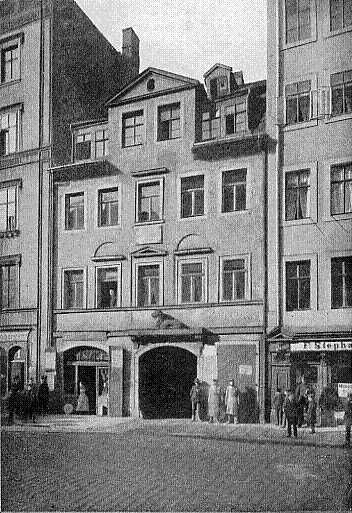
Wilhelm Richard Wagner was born in Leipzig, one of the great centres of German music, on 22 May 1813. His mother was Johanna Rosine Wagner, and from the very start there has been a question mark over Wagner's paternity. Johanna was married to Carl Friedrich Wagner, a police actuary, and Carl Wagner was probably the composer's real father. There is, however, evidence to suggest the real father may have been the actor and painter Ludwig Geyer; the composer himself was never sure and Geyer's paternity has never been conclusively proved or disproved.
That Geyer was developing a relationship with Johanna Wagner, though, is indisputable. A couple of months after the composer was born, his mother left Leipzig, one presumes with her newborn baby, and travelled to Teplitz (now Teplice in the Czech Republic) to stay with Geyer. But by 16 August she was back in Leipzig for the baby's baptism in St Thomas's Church, the church forever associated with JS Bach. In November of that year, when Richard was six months old, Carl Wagner died, and within a year Johanna had married Geyer and was living with him in Dresden.
For the first few years of his life the future composer took his new father's surname, being known as Richard Geyer. His early life was spent in Dresden, where he attended school and had piano lessons.
In 1821, when Richard was eight, Ludwig Geyer died. The boy and his mother remained in Dresden, where he continued his schooling and had some important early musical experiences. By the end of 1827 the family had relocated back to Leipzig and from this point young Richard reverted to his original surname, being known thereafter as Richard Wagner.

Wagner's earliest known compositions - two piano sonatas and a string quartet - date from 1829, the year he turned 16, but these are all lost. Larger-scale works were written the following year, including a number of orchestral overtures, but these too no longer survive. His first-known vocal works, setting texts from Goethe's Faust, were written in 1831, along with a four-hand piano sonata. At the end of 1831, when he was 18, the young composer had fist first publication, the piano sonata in B flat to which I referred at the start of this article.
In his later life, Wagner composed a four-part autobiography, simply called Mein Leben (My Life). Much of this is questionable in terms of accuracy and was clearly designed to sell himself to the world in the best possible light. He played down a lot of the musical training and experience he had in the teens in order to cultivate the idea that he was an untutored genius - something Giuseppe Verdi did to some extent as well - but the fact remains that Wagner, though precociously talented, had a good general education, and a good musical education, despite his later claims to the contrary.
Wagner's devotion to Beethoven is evident in the works he produced in 1832 (five years after Beethoven’s death). Another large piano sonata, the Große Sonate in A major, appeared, with a massive central slow movement which is very reminiscent of the late Beethoven sonatas written only a decade or so before. The shadows of Beethoven and Schubert are even more in evidence in Wagner's only complete surviving symphony, the Symphony in C, also written in 1832. This had its premiere in Prague in November of that year, a major step up the musical ladder for the talented 19 year old composer. [listen]
Around the same time as Wagner was preparing for the symphony's premiere he conceived an idea for an opera. Called Die Hochzeit (The Wedding), he began working on the music but abandoned it a few months later after having written only three pieces. (He had planned to write an opera twice before but nothing had come of those projects.) The cessation of work on Die Hochzeit coincided with Wagner's move to Würzburg to take up his first official post, a couple of months before he turned 20, as chorus master at a theatre in the city.
In this same year, 1833, he gave private singing lessons to one of his choristers, Therese Ringelmann, and this developed into a brief affair. He had already had an infatuation with a Count's daughter the year before, and for his entire life Wagner found often found himself passionately attracted to women. It was to cause major upheaval on more than one occasion.
1833 also saw the creation of his first completed opera for which he wrote the text himself, setting in place a lifelong practice. Wagner always wrote his own opera texts, firstly in a prose version (like a short story) and then in the verses to be actually sung (the libretto). Only then would he embark on composing the music, firstly in a sketch score (playable on the piano) and then in the final orchestral score.
Wagner's first completed opera was Die Feen (The Fairies). This is no trifle; it's a full length work in three acts with nearly three hours of music. Based on Carlo Gozzi's play La donna serpente, Wagner's "grand romantic opera" was not performed during his lifetime - it had its premiere in Munich in 1888 - but it does show that the composer was coming to grips with the German Romantic tradition (as characterised by the music of Weber, for example) in his search for a personal style. [listen]
In early 1834 Wagner returned to Leipzig. Then, around the middle of the year he became the musical director of a touring theatrical company which was based in Magdeburg. He made his conducting debut with the company in Mozart's Don Giovanni in August and in the cast was another soprano with whom he fell in love: Christine Wilhelmina Planer, known as Minna.
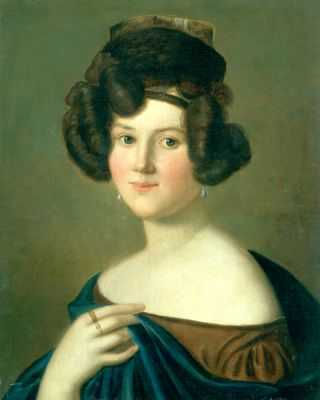
It was at this time in his life that Wagner became involved in radical literature politics in the form of the organisation known as Young Germany. The group rejected the classicism of Goethe and Mozart and even the early romanticism of Hoffmann and Weber. Religion was spurned and hedonism embraced.
Musically this brought Wagner into contact with the music of Vincenzo Bellini and Daniel Auber and the influence of both is evident in his next opera, a comedy based on Shakespeare's Measure for Measure called Das Liebesverbot (The Ban on Love). This had a single, disastrous performance under Wagner's direction in Magdeburg in 1836; the second performance was cancelled because only three people showed up and some of the cast got involved in a punch-up backstage.
While Die Feen was Wagner's attempt to rework the German romantic style, Das Liebesverbot was Wagner's take on the French and Italian comic tradition. [listen]
Wagner's relationship with Minna intensified during 1836 and in November of that year they were married. It was never going to be the serenest of marriages; in fact it was almost perpetually tense and often stormy. In 1837 Minna left him for another man but they were soon reconciled. In April of that year Wagner was appointed music director at the theatre in Königsberg, but within a couple of months he and Minna left for Latvia, where he'd been appointed musical director of the main opera theatre in Riga.
In between these two appointments, and shortly after the couple were reunited, Wagner read Edward Bulwer-Lytton's novel Rienzi, Last of the Tribunes and started planning an opera on the subject.
Wagner's first conducting engagement in Riga was in September of 1837. In the following season his conducting load included six Beethoven symphonies among much else, but in the March of 1839 his contract was not renewed. In the middle of the year, heavily in debt with their passports confiscated, he and Minna (and their dog, a Newfoundland called Robber) had to leave Riga secretly at night. During their escape Minna suffered a miscarriage. They were smuggled aboard a ship and ended up in England. The dangerous sea voyage was later claimed by Wagner to have inspired some of the sounds he created in The Flying Dutchman but there is no evidence of any sketches relating to that opera from this time.
From England they crossed the channel to France and in Boulogne the Wagners were met by Giacomo Meyerbeer, one of the most important and influential composers in France at the time. He promised to help with letters of introduction intended to pave the way for Wagner to work at the Paris Opéra.
Considering Wagner's later shameful attacks on Meyerbeer in print - because Meyerbeer was Jewish and because of Wagner's jealousy at his success - it is important to remember that Meyerbeer for his part tried to do what he could to help Wagner when he was in need. The Wagners spent two and a half dismal years in Paris, in poverty and with no prospect of advancement. At the time, Wagner acknowledged Meyerbeer's support; years later he conveniently forgot it.
In the middle of 1840 the Wagners were in such serious debt in Paris that they were threatened with imprisonment, a fate they narrowly escaped. Rienzi was completed in late 1840 but before this had already started work on his next opera, Der fliegende Holländer, a title traditionally translated as "The Flying Dutchman". Dutchman was completed in late 1841 and in April 1842 the couple were finally able to leave Paris.
Rienzi had been accepted for production by the main opera theatre in Dresden, partly through Meyebeer's influence. They arrived in Dresden in early April. In the middle of the year the couple managed to have a holiday, during which Wagner started to sketch ideas for a new opera, Tannhäuser. Back in Dresden, the premiere of Rienzi took place on 20 October. The struggling composer had his first major public success with Rienzi, and it helped to establish his reputation as a major creative figure. In this work, Wagner tackled the grand French operatic tradition, producing a five-act tragedy on a huge scale. [listen]
Even though Rienzi took Wagner only ten months to compose - a short time for him, all things considered - there is a definite shift in his style in the course of the piece, The first two acts imitate the style of French and Italian grand opera, but in the remaining three acts there is evidence of a more connected, organic style developing, something which would become a Wagner trademark in the later operas.
And the world didn't have to wait long for another new Wagner piece, with Dutchman already completed and ready to go. [listen]
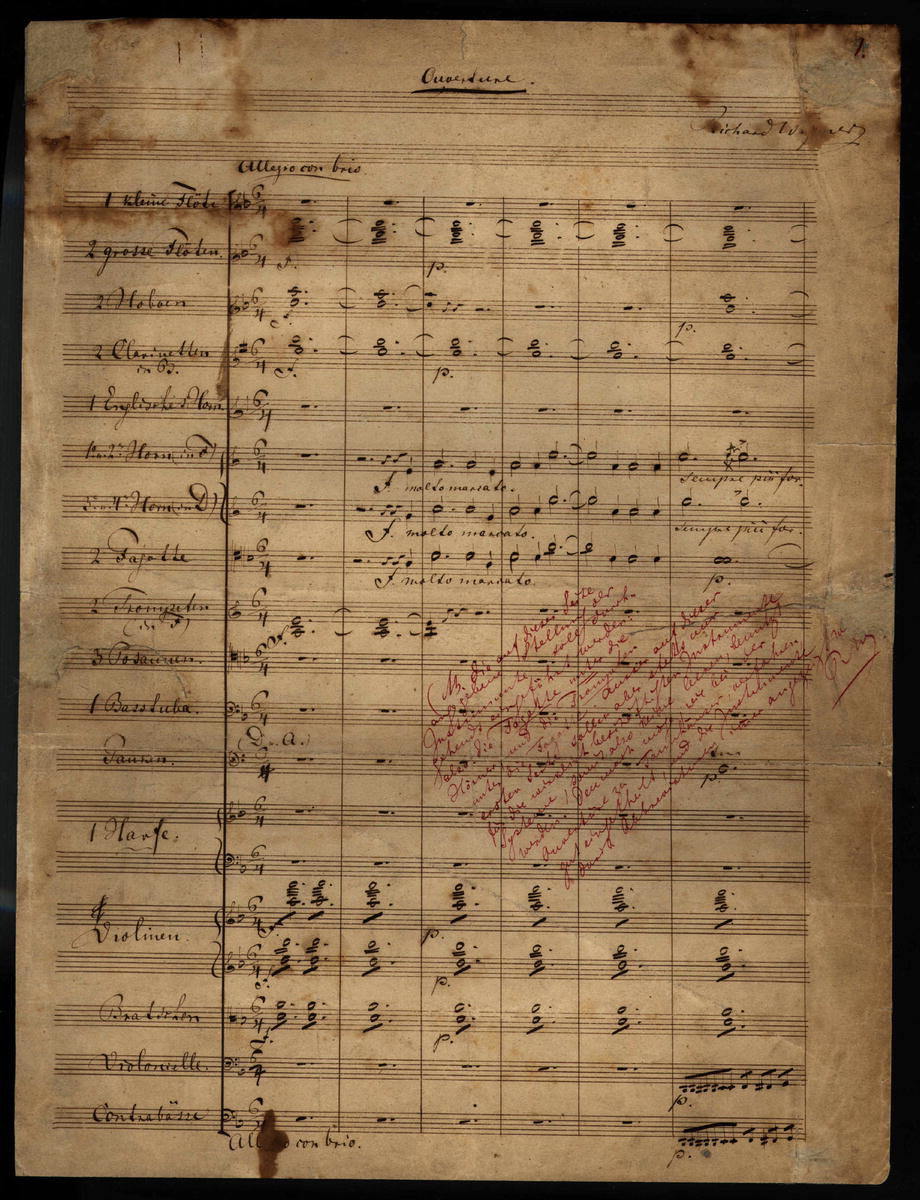
On 2 January 1843, less than three months after the premiere of Rienzi, Der fliegende Holländer was performed in another theatre in Dresden. It was less successful; Rienzi had tapped into the revolutionary spirit of the times while Dutchman was a darker, more serious affair entirely. But history - and especially the Bayreuth Festival which Wagner established later in his life - has decreed that Dutchman is the start of the real Wagner canon. It is the earliest Wagner opera given at Bayreuth and the earliest Wagner opera regularly performed today. Its sweep and power are irresistible, and its harrowing story of the supernatural and true love is gripping.
It was to Wagner's advantage that these two important operas were performed in Dresden as the position of Kapellmeister to the King of Saxony's court in Dresden had become vacant. He jumped at the opportunity for a regular income, although he resented being a liveried servant. The position was a busy one, requiring him to compose occasional pieces and conduct operatic and symphonic performances. A number of choral and instrumental works, now largely forgotten, date from this time, during which he was also hard at work composing Tannhäuser.
The creation of Tannhäuser took Wagner a little under three years, from when he wrote the prose outline (in mid 1842), through writing the full libretto (finished in the first half of 1843) and then composing the music (from mid 1843 to April 1845). It received its first performance in Dresden under Wagner's direction in October of 1845. The original Dresden version of Tannhäuser was greatly expanded and altered when Wagner adapted the work for its infamous Paris performances in 1861, and he continued to tinker with the work for the rest of his life. Three weeks before his death he still claimed that he owed the world Tannhäuser, so dissatisfied was he with the state (or states) in which the work existed. Today the work is usually performed in a hybrid of the Dresden and Paris versions. [listen]
Something which strikes me time and again with Wagner's life is his complete obsession with his work. 1845 is a good example. Between finishing the score of Tannhäuser on 13 April and the premiere on 19 October, Wagner (along with Minna, the dog and their parrot) went on a spa holiday at Marienbad. During this supposed "break", he read the source legends which would eventually lead him to compose Lohengrin and Parsifal, and by mid-July he had also written the first prose outline for The Mastersingers of Nuremberg. By mid-August the prose draft for Lohengrin was completed, and these are just the projects he managed to complete. There are many sketches, drafts, notes and even musical beginnings for operas and other projects which for one reason or another never came to fruition. It seems as if his brain never stopped planning, such was his need to create.
After the Dresden premiere of Tannhäuser, Wagner spent some months assessing the musical organisation of the court and submitting a detailed plan for its reorganisation, much of which was eminently sensible and creative, but after a year it was evident that his plan had been ignored. Wagner ruffled more than a few feathers in 1846 by conducting Beethoven's ninth symphony, a work then still considered largely unapproachable, at the court's traditional Palm Sunday concert, but the event proved a triumph and greatly increased his professional standing. Sketches exist (again, sadly not completed) for two new symphonies which he considered writing at this time, showing that, at times, his interests extended far beyond the theatre. And all the while, ideas for what would become his future music dramas were in his mind.
In 1847 Wagner continued to work at the Dresden court. He finished the prose draft for Lohengrin in that year and also went to Berlin to conduct Rienzi there. Turbulence awaited him - and the rest of Europe - in 1848, the year starting with a personal blow with the death of his mother back in Leipzig. Wagner was deeply involved in anarchistic revolutionary activity in 1848, attending meetings, writing pamphlets and giving speeches. His colours were most definitely and very publicly nailed to the mast of revolution, something for which he would soon suffer greatly.
But in the midst of this turmoil he continued to create. The score of Lohengrin was finished in April 1848, and later the same year he completed the original prose summary for what would eventually become the Ring cycle. The sheer quantity of creative ideas held in his head simultaneously is quite staggering, and the ideas he didn't realise just add to this impression. In early 1849 he spent some time planning a massive five-act drama called Jesus of Nazareth. A Wagner opera on Jesus; now that would have been interesting!
In May 1849 the insurrection in which Wagner was a leading player was defeated and a warrant issued for his arrest. He fled Dresden for Zurich in Switzerland, and with the help of Franz Liszt managed to get to Paris. With little prospect of any of his music being performed, Wagner exorcised his creative demons at this point in his life by writing a number of powerful pamphlets on a range of subjects. He also had political points to make, some of them born of the basest self-interest. In 1849 he wrote Art and Revolution and perhaps his most famous operatic manifesto, The Artwork of the Future. In 1850, Liszt conducted the premiere of Lohengrin in Weimar, an event which Wagner for obvious reasons couldn't attend. The following month his burning resentment at his treatment in Germany led to the publication of his most infamous essay, Jewishness in Music. Anti-Semitism was common across much of Europe at the time, and it was hardly new, but Wagner's essay goes further and displays more virulent, individualised bigotry than most.

Wagner's personal life was also in turmoil in 1850. In Zurich, which had become his base, he had made the acquaintance of two women who supported his ideas and who offered him an annual allowance of 3,000 francs, about half his Dresden salary. One of the women was a widow called Julie Ritter; the other was Jessie Laussot, an English woman married to a Bordeaux wine merchant, Eugène Laussot. Wagner spent time in Bordeaux with the Laussots and while there embarked on an affair with Jessie. So serious was this that the couple planned to elope but Eugène discovered the plan and the affair brought to an end.
Wagner returned to Zurich, and his long-suffering wife, and worked on his essay Opera and Music at the end of the year.
Lohengrin, whose Weimar premiere Wagner had not attended because of his outlaw status in the German states, is very much a companion piece to Tannhäuser, and is yet another example of the sorts of stories from ancient legend which attracted the composer. Lohengrin was the most popular of Wagner's operas during his lifetime and in a very real sense marks the end of the first half of Wagner's composing life. No new Wagner opera would be premiered for another fifteen years. [listen]
But the 1850s were no years of idleness for Wagner. On the contrary, in this decade he worked perhaps harder than any other composer ever, to bring about some of the most audacious theatrical creations of all time. In 1848 he had written a prose resumé on the Nibelung myths and called it The Ring. He turned this into an opera libretto called Siegfrieds Tod (The Death of Siegfried) and at the end of 1848 read this to a group of friends. But I think it's safe to say that not even Wagner knew at that stage where these ideas would take him.
Still in exile in Zurich in 1851, Wagner continued to write essays and lived off the support of people like Julie Ritter. Early in the year he wrote an opera libretto called Der junge Siegfried (Young Siegfried), designed to precede The Death of Siegfried as an introductory opera. By the end of the year he'd realised that this pair of operas themselves needed introductory operas, so sketched a prose outline called Die Walküre (The Valkyrie) to introduce Young Siegfried, and another called Das Rheingold (The Rhine Gold) to introduce the whole lot.
The verse texts for Walküre and Rheingold were completed in mid-to-late 1852, and at the end of the year he revised Young Siegfried and The Death of Siegfried. The latter two texts eventually got new names: Young Siegfried became just Siegfried, and The Death of Siegfried became Götterdämmerung (The Twilight of the Gods). So by the end of 1852 Wagner had four opera libretti ready to set to music to become a cycle of four gigantic operas which he called Der Ring des Nibelungen (The Ring of the Nibelung). A few musical sketches had been made, but now the serious work of setting them to music would have to begin.
This task would not be completed for another 22 years.
In the meantime, other events were conspiring to redirect Wagner in ways not even he could have foreseen. Near the start of 1852, in Zurich, he met Otto Wesendonck, a wealthy merchant, and his wife Mathilde. Wagner's psychological state at this time was very unstable; his letters reveal that he was often depressed and occasionally suicidal. Yet he continued to work and over the next few years Otto Wesendonck supported Wagner with large amounts of money.

For Mathilde Wesendock Wagner wrote a short but very passionate piano sonata in 1853. This work is very different from his student piano sonatas of more than 20 years earlier and it says much about the way Mathilde and Wagner felt about each other. [listen]

Wagner's wife, Minna, had long been suffering from a serious heart condition, which deteriorated in early 1854. Her illness, and Wagner's many other expenses, led to him being catastrophically in debt, a situation in part relieved by Otto Wesendock's continued generosity. By late 1854, though, Wagner's passion for Mathilde Wesendonck had inspired the idea for a new opera directly inspired by their mutual love: Tristan und Isolde.
Still, this would not be written for some time yet. During all this time Wagner was at work composing the Ring. Das Rheingold was composed in 1853/54; Die Walküre wasn't finished until March 1856. Before starting the music for Siegfried, Wagner sketched out some ideas for another extraordinary operatic project, based on his recent researches into Buddhism. To be called Die Sieger (The Victors) this opera never went beyond a prose sketch but the notion of writing a Buddhist opera, in which reincarnation was reflected musically in Wagner's use of recurring themes, haunted him for the rest of his life.
In mid-1856, after contemplating changing the ending of the Ring to reflect his reading of Schopenhauer - an idea he eventually rejected - Wagner set to work on composing Siegfried. This period saw the first dated musical sketches for Tristan as well, and early the next year, the formal ideas for Parsifal began to take shape. That Wagner could simultaneously plan or execute three massive projects like Siegfried, Tristan and Parsifal defies the imagination. Parsifal, in particular, took up the ideas of passion, chastity, renunciation and redemption which he had been thinking about for the unrealised Buddhist opera. Indeed, for all its overt Christian symbolism, Parsifal has much about it which derives from Buddhism as well.
Wagner's passion for Mathilde Wesendonck was most definitely reciprocated, but it seems unlikely that their relationship was ever consummated sexually. Still, this did not stop a major upheaval in the lives of all four people involved. Minna Wagner was humiliated by her husband and Otto Wesendonck was made to feel a fool for supporting Wagner with so much money over such a long period of time.
Then in 1857 Wagner made a momentous artistic decision. After completing the music for the second act of Siegfried - about two thirds of the way through the Ring - he broke off and started to compose Tristan und Isolde. The passion for Mathilde demanded that this opera, about love so strong that it creates a blissful death, be composed, whatever the cost. And at exactly the same time, the Wagners had house guests. The conductor and pianist Hans von Bülow visited with his new wife on their honeymoon. His new wife was Cosima, the daughter of Wagner's long time supporter and friend Franz Liszt. Thus, living with his ailing and abandoned first wife, Wagner, in the midst of an intoxicating passion for the wife of his benefactor, had as his houseguest the woman who would eventually become his second wife.
To end this part I've decided to share one of the songs Wagner wrote setting poems written by Mathilde Wesendonck. The five Wesendonck-Lieder, as they're now called, were orchestrated by Felix Mottl, a conductor later closely associated with Wagner, and the songs are closely connected with Tristan. This is especially true of the fifth song in the set, which is called Träume (Dreams) and subtitled "Study for Tristan and Isolde". [listen]
Part Two
When I made the second of the two radio programs on which this article is based, I began with this music.
Radio being what it is, I had to interrupt it somewhere to get going on the second part of my survey of Wagner’s life and work, but as I said at the time, there is no moment at which it's right for me to interrupt this music, and therein lies the core of what makes this music and this composer unique and revolutionary. This music, the prelude to Richard Wagner's opera Tristan und Isolde, marks a turning point in not only the composer's life but also in the history of western music.
In 1857 Wagner and his wife Minna were living in Zurich, supported by the wealthy merchant Otto Wesendonck and living in a house alongside that inhabited by their benefactor and his wife, Mathilde, with whom Wagner was passionately in love. Wagner had been in exile from Saxony for eight years after his involvement in the failed anarchist uprisings of 1848/49. Now, working on massively ambitious operas and writing pamphlets on artistic and social subjects, and with Minna increasingly unwell, he had accumulated enormous debts, which Otto Wesendonck continued to subsidise.
Mathilde Wesendonck reciprocated Wagner's love, but it seems that their relationship was never physically consummated. The erotic energy between them, though, was palpable, to the extent that Wagner stopped work on the massive Ring cycle in August 1859 at the end of the second act of Siegfried. He then started work on Tristan und Isolde, the opera inspired by his love for his benefactor's wife.
In 1858 Wagner's long-suffering wife banished him from the house in Zurich; she had had enough of Wagner's affair with Mathilde, consummated or not. Wagner travelled to Venice, where, in July of that year, the draft for the second act of Tristan was completed, but had to leave Venice in early 1859 due to ill health and police harassment. The third act of Tristan was finished in Lucerne in March, and the full orchestral score was completed in early August, a phenomenal amount of work in such a short period of time. [listen]
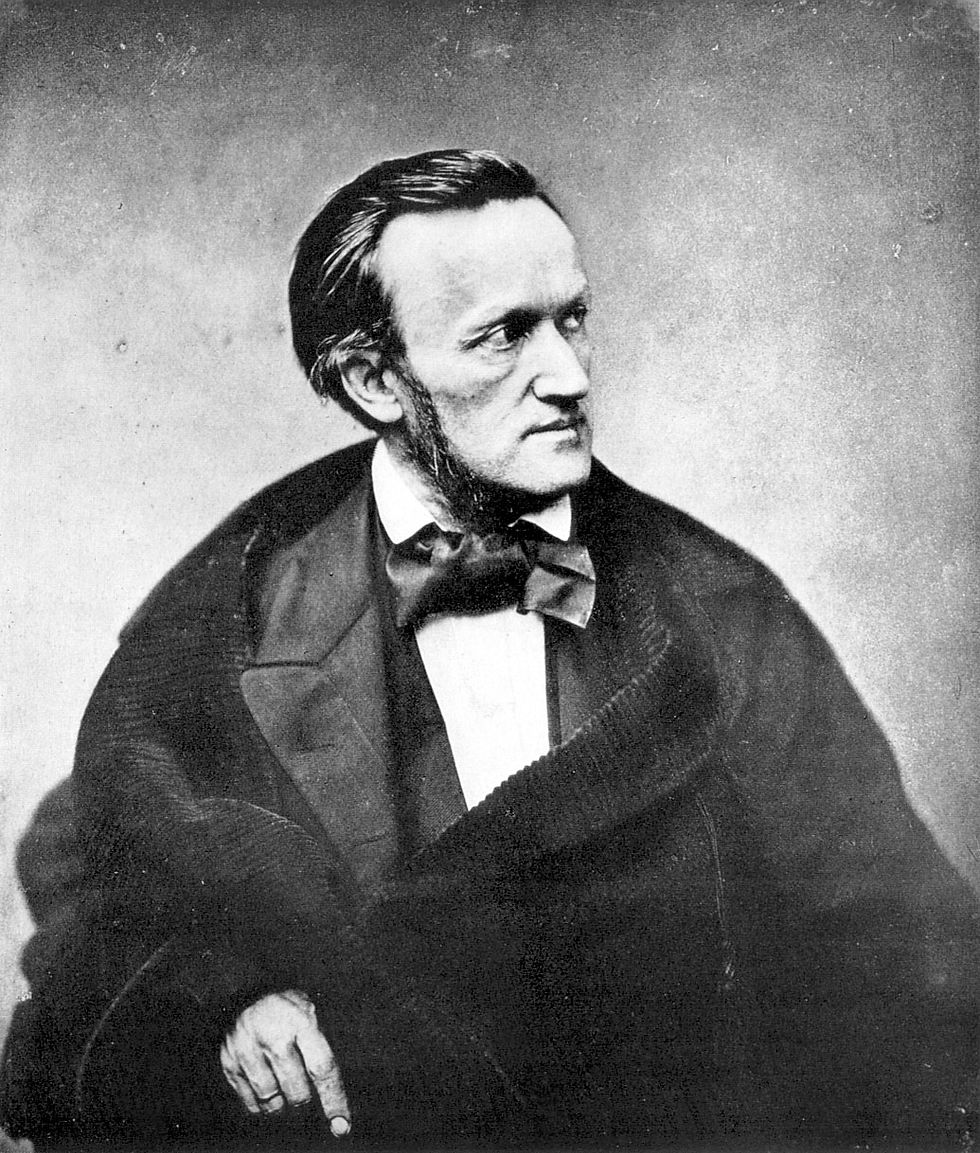
After a brief return visit to Zurich, in which Wagner sold to Otto Wesendonck the copyright for the four Ring operas for 6,000 francs each, Wagner went to Paris, determined to make a successful artistic assault on what was then the operatic capital of Europe. Minna - along with the dog and the parrot - joined him there in an attempt to salvage the marriage.
Through the influence of Princess Metternich, Tannhäuser was accepted for production at the Paris Opéra. The way for Parisian acceptance of Wagner's radical - and very un-French - music was paved by the mounting of three concerts of his music at the Italian Theatre in Paris, and he agreed to adapt Tannhäuser to meet the requirements of the Paris Opéra...to a point.
Wagner added ballet music, although not where it was traditionally placed in French opera. He adapted the vocal parts to suit the singers. And the whole work was sung in French. The rehearsals - all 164 of them over six months - had been supervised by Wagner himself, and he conducted the performances, but these were a debacle. There was disruption from elements of the audience who disapproved of German music, who disapproved of Wagner, and who disapproved of having to come early in order to see the ballet. The enterprise was abandoned after three performances and Wagner's Parisian humiliation was complete.
While he was in Paris, Wagner received the news that a partial amnesty allowed him to return to parts of Germany, although not yet to Saxony. Late in 1861 he visited the Wesendoncks in Venice and began work on his next opera, Die Meistersinger von Nürnberg (The Mastersingers of Nuremberg).
The text for this - a comedy that only Wagner could have conceived - was completed in January 1862 and he immediately set to work on the music. He took lodgings in Biebrich, on the Rhine between Wiesbaden and Mainz, to work on the opera, and while he was there Minna turned up uninvited. What Wagner later described as "ten days in hell" followed, during which he proposed to set her up in a residence in Dresden with a room for him to use when he visited. He was acutely aware of Minna's ill health and thought this a preferable option to suggesting divorce, and Minna duly returned to Dresden. When Wagner was eventually allowed to return to Dresden, however, he made no attempt at first to visit his ailing wife.
Wagner stayed in Biebrich for about a year. During this time he coached the tenor and soprano who would eventually sing the title roles in Tristan und Isolde, Ludwig Schnorr von Carolsfeld and his wife Malvina. Around the same time Hans and Cosima von Bülow - whom he had met in Zurich five years before - visited him.
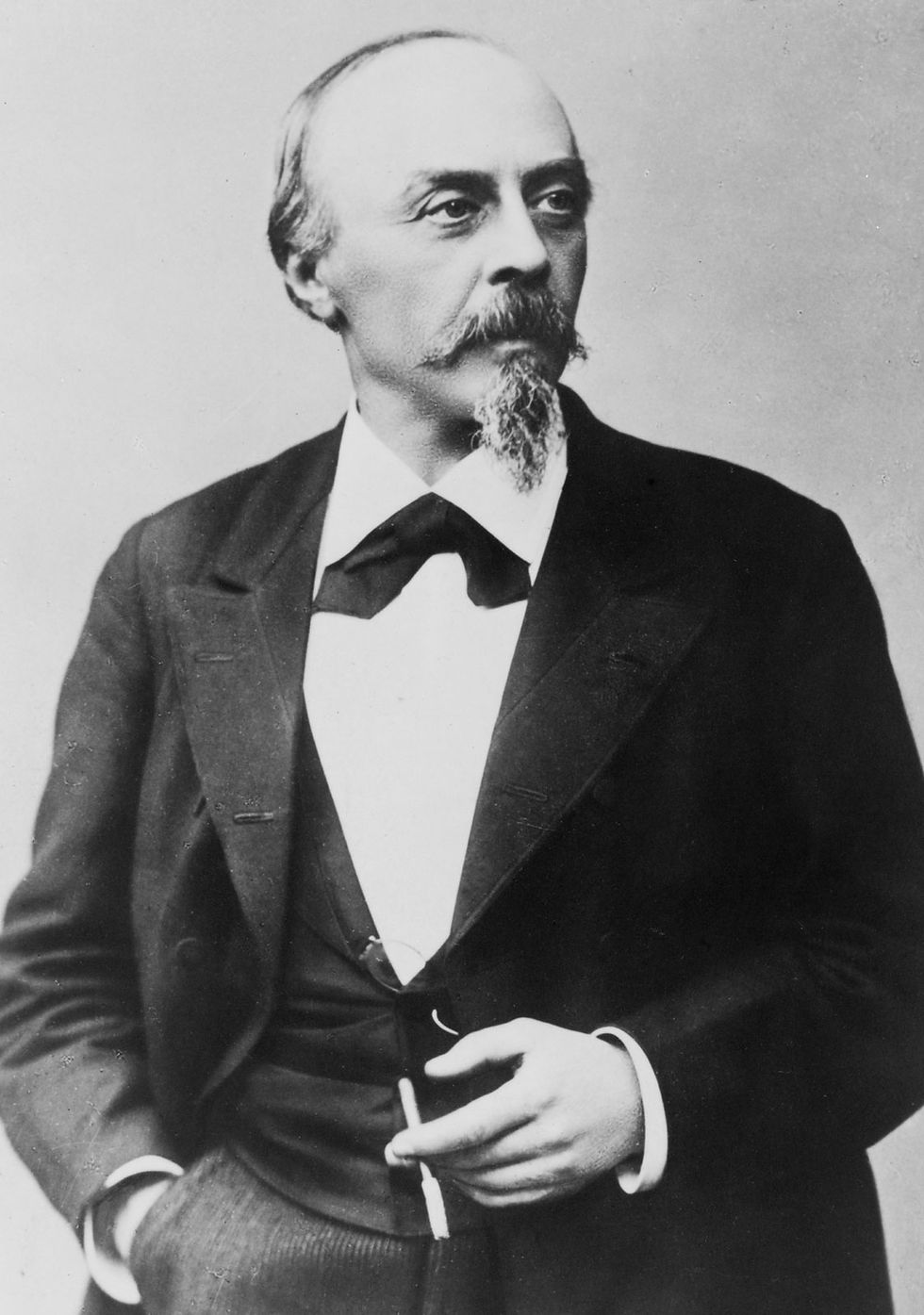
In November of 1862 Wagner had his last meeting with Minna, in Dresden, but by now the focus of his emotional life - and to a large extent his professional life - had shifted to the von Bülows. Wagner fell in love with Cosima von Bülow - the daughter of Franz Liszt - while at the same time her husband was a devoted Wagner disciple.
In March 1864 Wagner's fortunes completely changed with the accession to the throne of Bavaria of the young King Ludwig II. Ludwig was a passionate Wagner devotee and he immediately summoned the composer to Munich, paid his debts and set him up in his own house. Within three months Cosima had joined him there and their relationship was consummated. Shortly afterwards Wagner arranged for her husband Hans to be appointed "Performer to the King". Von Bülow thereby immediately became involved in the unavoidable public scandal resulting from a perceived ménage a trois involving himself, Wagner, and his wife.
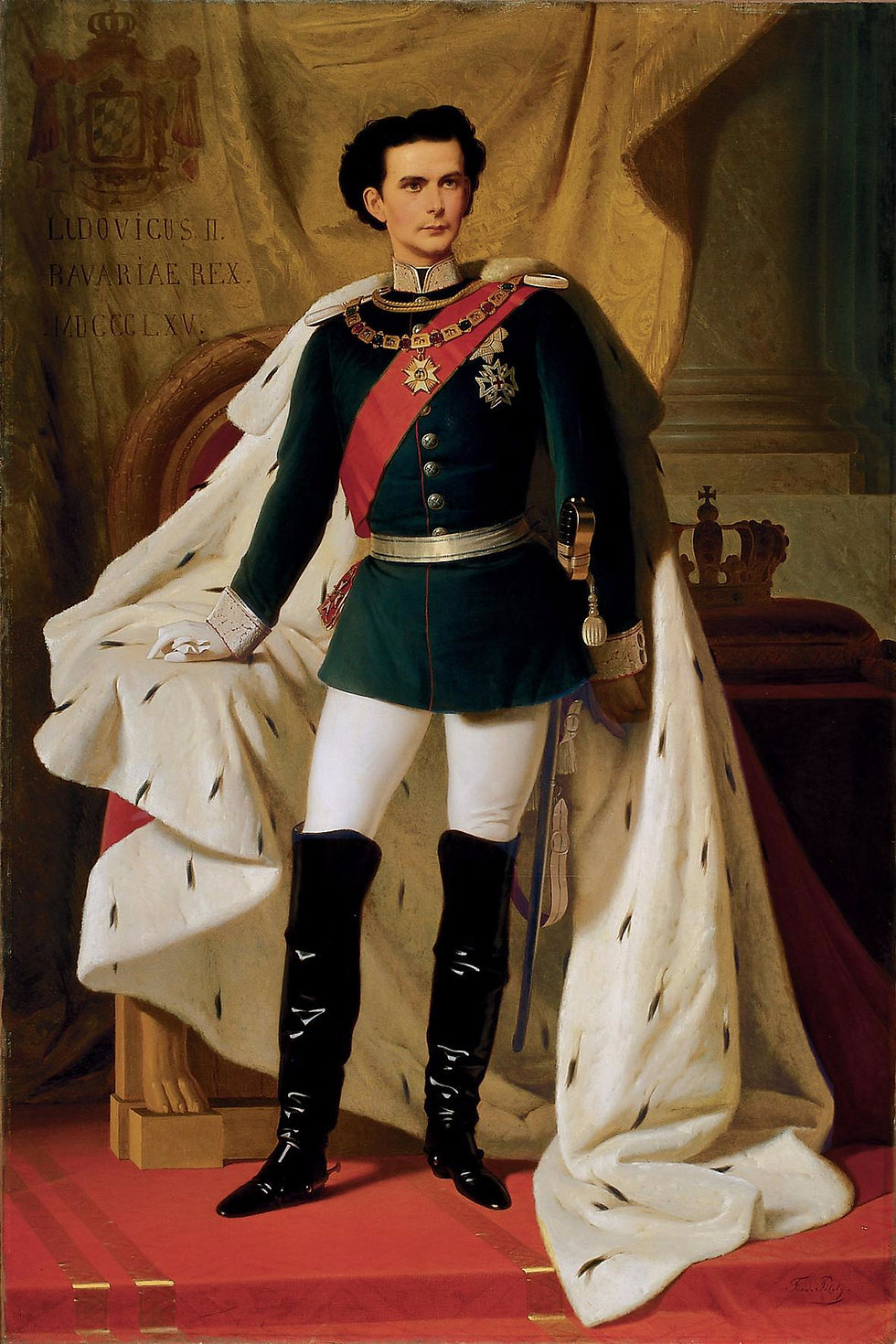
In April of 1864 Cosima bore her and Wagner's first child, a daughter called Isolde. Two months later her husband conducted the premiere of Tristan und Isolde in Munich, with Malvina and Ludwig Schnorr in the title roles. Ludwig Schnorr died only three weeks after the premiere, a severe personal blow for Wagner. Malvina later caused an enormous scandal by denouncing Wagner and Cosima's relationship to King Ludwig, who had been in blissful denial about it.
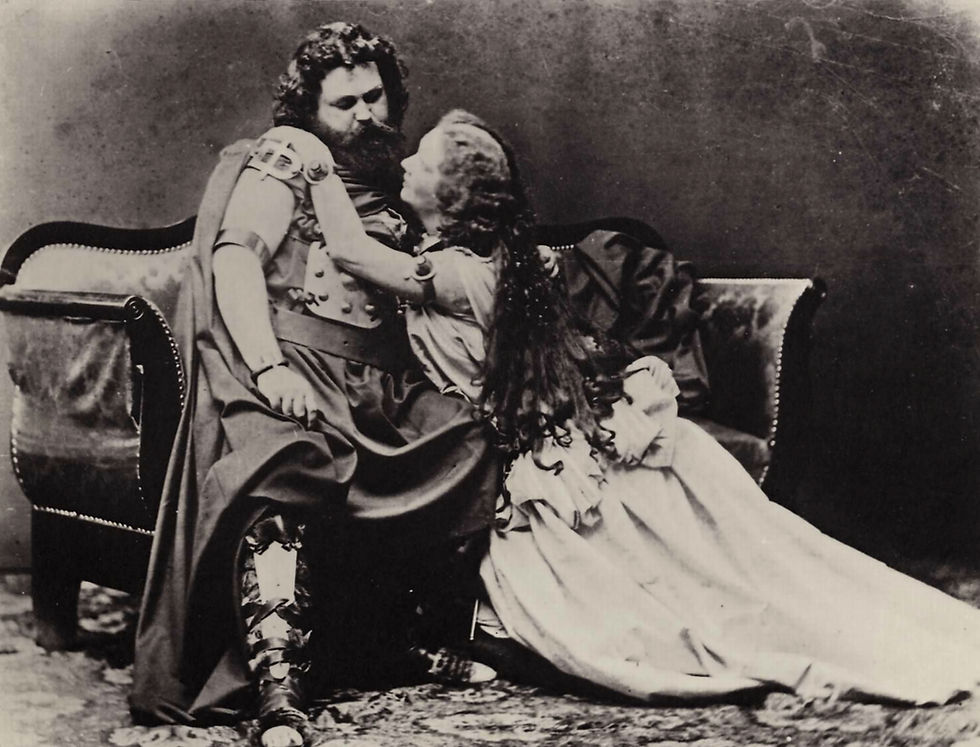
The public campaign against Wagner and his scandalous associates - and the vast amounts of money being given to him by the King - reached fever pitch and by the end of 1865 Ludwig was forced to issue a decree banishing them from Munich.
In January of 1866 the tragic Minna finally died in Dresden. Shortly thereafter Wagner and Cosima set up house on the shores of Lake Lucerne, where they were visited by King Ludwig incognito. Wagner and Cosima attempted to dupe the King by lying outright about the reasons for Cosima's presence there; they claimed she was working as Wagner's assistant. But back in Munich the public scandal continued over Ludwig's continued support of Wagner.
In 1867, Wagner and Cosima had their second child, a daughter called Eva (Eva is the principal female role in Mastersingers), after which Wagner bravely visited Munich for some months. At the same time Hans von Bülow was appointed King Ludwig's Kapellmeister and director of a proposed music school. In the midst of this turmoil and scandal, Wagner managed to complete Mastersingers, and it had a triumphant premiere in Munich in June 1867. Hans von Bülow conducted. [listen]
Six months after the premiere of Mastersingers, Cosima and her two young daughters officially moved to live with Wagner in the house on the shores of Lake Lucerne. King Ludwig was only now officially informed of the nature of their relationship.
In March 1869, nearly twelve years after finishing the second act of Siegfried, Wagner returned to the unfinished Ring project and started act three. In between those two acts his life had changed beyond recognition. He had created two massive operas - Tristan and Mastersingers - and only now did he feel able to resume the project he for so long feared would remain incomplete. In the meantime, in June, 1869, Cosima gave birth to the couple's third child, a son whom they called Siegfried.
King Ludwig was also keen that the Ring be completed and began pressuring Wagner to have Das Rheingold and Die Walküre, which were already finished, performed in Munich. Wagner resisted. His intention was that the whole cycle be performed together, not as individual works, but eventually he had to give way. Das Rheingold was performed in Munich in September 1869. Excerpts had already been performed in a concert in Vienna in 1862 but this was the first staged performance of any part of the as yet still incomplete Ring cycle. [listen]
Wagner's wishes were ignored by the King the following year when the second opera in the Ring cycle, Die Walküre, was performed in Munich as well. Siegfried by this stage was still not complete, but what the King wanted, the King got. [listen]
In July 1870, the month after the premiere of Die Walküre, Hans and Cosima von Bülow's marriage was formally dissolved. In August Wagner and Cosima were married in the Protestant church in Lucerne. Wagner continued to work on completing Siegfried throughout the rest of 1870 and it was on Christmas Day of that year that he arranged for a performance of the Siegfried Idyll for chamber orchestra to be played on the stairs of their home to awaken Cosima on her birthday. [listen]

Six weeks later, in early February 1871, Wagner finally finished the score of Siegfried. He had started it nearly 15 years before. Before starting work on Götterdämmerung he and Cosima began the search for a theatre in which they could actually mount the Ring when it was complete and they eventually decided on the Bavarian town of Bayreuth. Bayreuth already had an opera theatre but this - like every other theatre in existence at the time - was too small to accommodate Wagner's cataclysmic vision of the end of the world. He decreed a new theatre should be built.
The Bayreuth council was supportive and the foundation stone was laid on 22 May 1872. A year before Wagner had announced the first Bayreuth Festival - and the first complete performance of the Ring - would take place in 1873, but clearly this was not going to happen. In 1873, after he and Cosima had toured Germany looking for suitable singers, and with all the responsibility of building a new theatre unlike any other weighing on his shoulders, he finally started the score of Götterdämmerung and announced the Festival would take place in 1875.
The first rehearsals for the Ring's premiere took place in 1874. The conductor Hans Richter was given the awesome responsibility of bringing the work to life, and on 21 November 1874 Wagner put the final notes on the score of Götterdämmerung. The music alone took Wagner 21 years. From his first prose sketches on the Ring, made in 1848, the project had taken 26 years from start to finish. Now to get the thing performed...
More rehearsals for the Ring took place in Bayreuth in the summer of 1875, with the aim being to finally present the work in the new theatre the following year. In June 1876 the final stretch of rehearsals began, and the first Bayreuth Festival began on 13 August with Das Rheingold in its proper place as the "introductory evening" and the other three operas in sequence afterwards. Siegfried had its premiere on 16 August. [listen]
The mighty Ring project came to its conclusion with the premiere of Götterdämmerung the following night. The first Bayreuth Festival was an enormous artistic success, and major international news. It was attended by crowned heads, dignitaries and major musical figures from across Europe. A deficit of 148,000 marks meant that another Festival couldn't be held for some years, but the precedent had been set and Wagner deserved his triumph. [listen]
By the time the first Bayreuth Festival took place, Wagner was 63. It had been a titanic struggle but it had finally happened. But the next few years were largely spent in undertaking concerts and securing money by whatever means possible to not only pay off the debts from the 1876 event but also mount another Festival. In 1878 an arrangement was reached with the ever-devoted King Ludwig who was granted the right to perform Wagner's works, in return for a 10% royalty which was set against the debts. Meanwhile, in addition to seeking sources of income, Wagner had been working on the prose draft and libretto of his next opera, Parsifal. He finished the text in April 1877 and started the music in September of that year. The draft of the score was completed 18 months later, in April 1879.
In addition to composing and performing, Wagner was still writing pamphlets on a range of subjects. His health had started to deteriorate and on his doctor's orders he sought out a warmer climate, spending most of 1880 in Naples.
At the end of 1880, even though the final orchestral score wasn't completed, Wagner conducted a private performance of the prelude to Parsifal for King Ludwig in Munich. It was to be their last meeting.
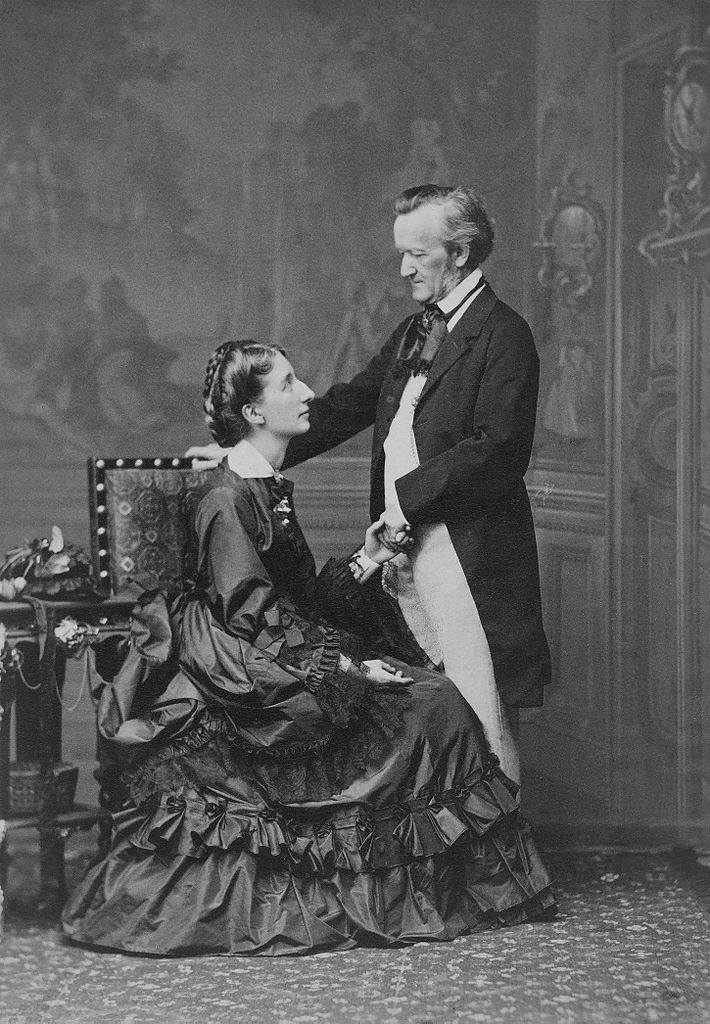
At the end of 1880 Wagner returned to Bayreuth, but in early May he travelled to Berlin for that city's first complete performances of the Ring cycle. At the end of 1881 he experienced serious chest spasms which his doctor failed to properly diagnose as a heart condition, but still, in January 1882 he managed to finally complete the full score of Parsifal. Despite a heart attack in March, Wagner and his family undertook an Italian visit in April, travelling through Messina, Naples and Venice. From May, back in Bayreuth, preparations got underway for the second Bayreuth Festival which would see only one work performed: Parsifal.
Wagner's last opera had its first performance on 26 July, 1882, and a further fifteen performances followed. From the start it took on a special, quasi-religious quality. Wagner didn't even call it a "music drama", his preferred term for his operas. He gave it the unique title of Ein Bühnenweihfestspiel, which can be translated as "a stage-consecrating sacred drama". At the final performance Wagner, who was very ill, took the baton from Hermann Levi and conducted the conclusion of the work. [listen]
In September the Wagners travelled to Venice and less than two months later, on 13 February 1883, Wagner suffered another heart attack. He died in Venice that afternoon in Cosima's arms. Five days later the coffin was carried in procession through Bayreuth and buried in the gardens of the Wagner home.

At the end of my recent post on the life and work of Verdi, I said, "There is no way an article like this can do justice to the unique contribution of Giuseppe Verdi to musical art, but I hope it's given some sort of context to his better-known works, and perhaps also given you some leads for further exploration.” This is even more relevant to Richard Wagner, who was born in the same year as Verdi and who in some ways personified the exact opposite of Verdi's musical ethos. Wagner's thirteen operas - and in particular the ten mature operas of the “Bayreuth canon” - are among the treasures of western art. Like Shakespeare's plays they can withstand almost any interpretation placed upon them and still come up with the Wagner in the forefront of our mind.
That Wagner's life, and - it must be said - much of his art, was shaped by his racist views is unavoidable. Parsifal in particular reflects Wagner's preoccupation with the supposed degeneration of the human race and the need for pure, uncontaminated blood to carry on the quest for an undefiled humankind. How one deals with the beauty of the music and the ugliness of the man is up to the individual.
The music is of staggering power and incredible ingenuity. When I look at the scores I am in awe of the man's dedication and sheer hard work. I want to love him, but there's always the spectre of the man himself hanging over the music and that makes me take a step back from being a devotee. That's just the way I cope; everyone has their own way of coping and that's just the way it should be when it comes to art.
Parsifal, despite all this, is staggeringly beautiful on a purely musical level; this cannot be denied. And what is also undeniable is the fact that Wagner's music is undeniable; that's his power and our challenge.

This article is based on a pair of Keys To Music programs first aired on ABC Classic FM (now ABC Classic) in June, 2013.



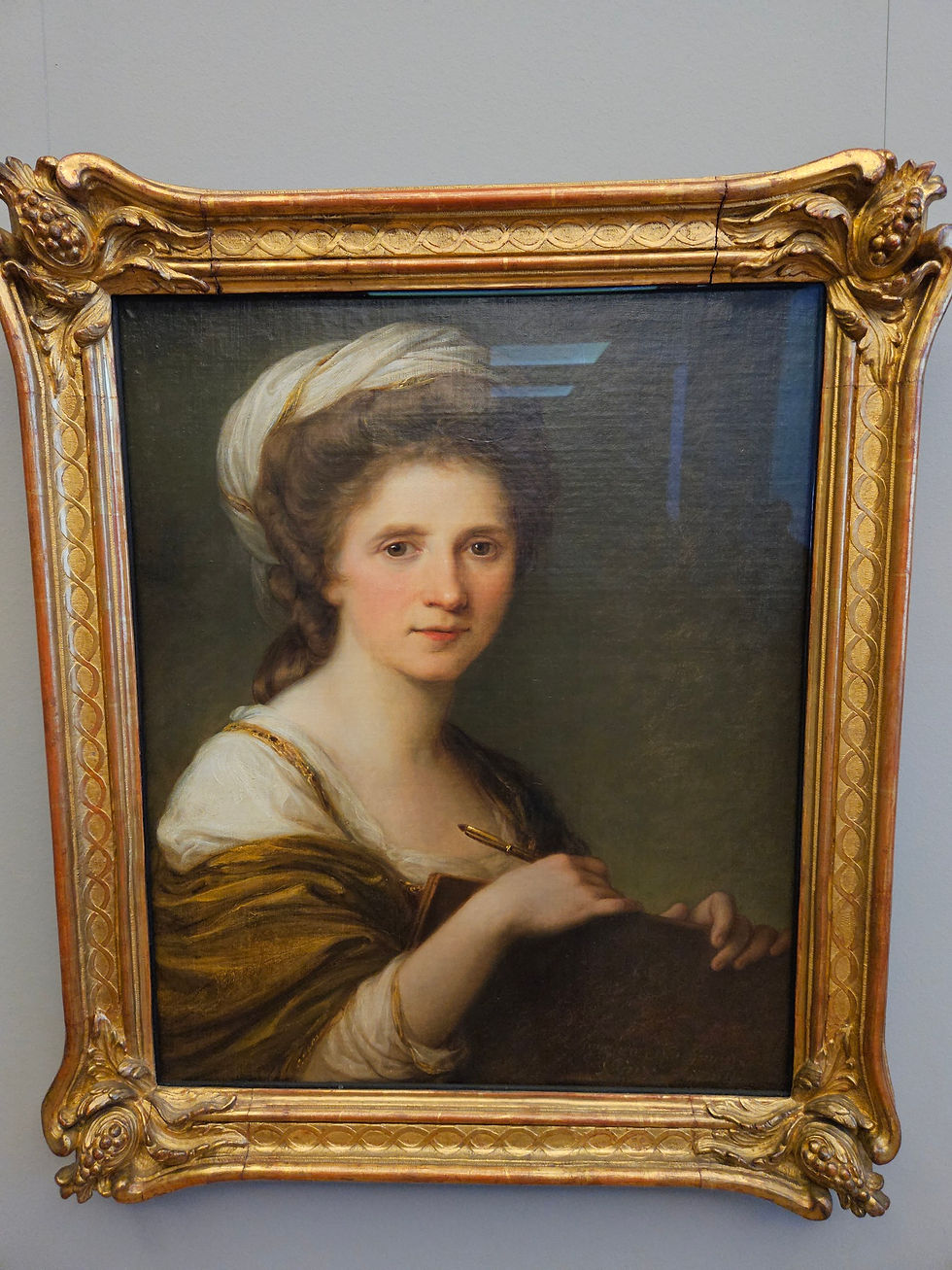
Comments